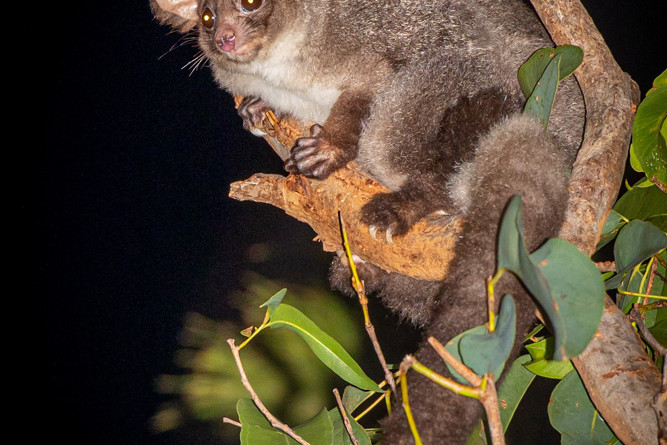Community & Business
29 January, 2023
Which is the cutest glider of all?
AUSTRALIA is home to a number of marsupial gliders. These relatives of our possums have specially adapted skin folds attached to their arms and legs that can be spread when the animal is airborne and which are capable of supporting gliding flights from one tree to another.

By Peter Valentine
They range in size from the largest gliding marsupial (the Southern Greater Glider) down to the tiny Feather-tailed Glider.
There are species across most of Australia except the southwest. Their ecology varies a little with most feeding on plant exudates, insects and nectar but the Greater Gliders feed exclusively on eucalypt leaves.
Most of the Australian gliders are present in northern Queensland and can be seen in eucalypt forests and tall woodlands along the edge of the rainforests of the Wet Tropics World Heritage Area.
The Mahogony Glider is known only from the lower elevation coastal side of the ranges and is confined to areas just north and south of Cardwell and Ingham. It is endangered largely due to habitat loss.
One of the more commonly seen species is the so-called Krefft’s Glider, a type of sugar glider that is widespread and feeds on nectar, pollen and small arboreal animals.
Like many gliders, these are social animals who live in small family groups occupying common dens (tree hollows) within their home range.
The Indonesian subspecies has been brought into captivity in the USA and thousands are kept as pets due to their appeal. Sadly this “industry” is seriously flawed due to the cruelty of ignorance or indifference of most “owners” combined with the industrial breeding programs targeting impulse purchases at shopping malls. The American way? For many wildlife species cuteness has meant some sad and unfortunate outcomes.
In our region, people are able to enjoy the different species of our delightful gliders by signing up for nocturnal tours with accredited wildlife guides.
It is astonishing to see these animals launch from a high tree and then glide across a long distance to land safely at the base of another tree. A wonderful sight.
The beautiful Yellow-bellied Glider is quite common on the eastern edge of the tablelands where they use their teeth to make incisions in the bark of certain gum trees to access the resin produced, an important food resource.
Other species of gliders, including the tiny Feather-tailed Glider, will take advantage of this and are often seen feeding from the same flows.
The Northern Greater Glider is our largest species and is found across the region, occupying taller eucalypt forests. These are solitary animals who come together only to breed and who feed only on eucalypt leaves.
They need tree hollows to live in during the daylight hours and each animal will have several hollows across its home range that are crucial for survival.
Forest clearing is highly destructive of their habitat and loss of hollows is a serious threat. Greater Gliders are capable of long glides, up to perhaps 100 metres when launched from a tall tree. Apart from habitat destruction, another threat to most gliders is the use of barbed wire fences that sometimes leads to entanglement and slow painful death. Wildlife safe substitutes are now being used by many property owners.
The Greater Glider has a claim to be our cutest glider and for some people it seems like a model for the seriously cute Gizmo of Gremlin movie fame.
It was once considered a single species along the entire eastern ranges of Australia but genetic studies have now separated the population into three geographic species.
They do not occur in rainforests but require old aged eucalypt forests that supply both food and hollows.
I find it hard to award a cuteness prize to a single species as my passion for wildlife (biophilia) means I love them all. What do you think?
Peter Valentine is an adjunct Professor at James Cook University and he has spent much of the past 40 years studying wildlife in northern Queensland


